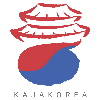Korean Lessons ᚛ Level 1 - My First Steps in Korean (Lessons 1 to 30) ᚛ Lesson 10 - Basic Vocabulary in Korean
Basic Vocabulary in Korean
In this chapter, we will finally see some basic words in Korean. Learning these words is a great opportunity to practise your Korean reading as well as better understand the different speech levels in Korean.
Saying “hello” in Korean
In South Korea, the most common way to say “hello” is to use the phrase 안녕하세요. This phrase literally translates to “Are you at peace?”.
안녕하세요 is a phrase used in a polite context (ending in -요), i.e. with strangers, vendors, waiters, or anyone else with whom a great show of respect is not necessary. Also, due to the age hierarchy rules seen in the chapter on politeness styles in Korean, this is an expression that you will generally use towards someone who is older.
With your close friends who are younger or the same age as you, 안녕하세요 would be too polite. In this case, the simple expression 안녕 is used.
Lastly, if you find yourself in a formal situation, then the question 안녕하십니까? should be used.
Saying “yes” in Korean
In Korean, the word "yes" can be said in three different ways, depending on the style of politeness you need to use:
- in the casual style: 응.
- in the polite style: 네.
- in the formal style: 예.
Saying “no” in Korean
To say “no” in Korean, there are only two expressions you need to remember:
- in the casual style: 아니.
- in the polite and formal styles: 아니요.
Saying “thank you” in Korean
Saying "thank you" in Korean slightly upsets the usual codes of politeness. The formal expression 감사합니다 is the most used daily expression in polite and formal contexts. However, your familiarity to the person you thank will affect the way you say “thank you”:
- in the casual style: 고마워.
- in the polite style with people close to you (older friends, colleagues, etc.): 고마워요.
- in the polite style with people who you aren’t close to (strangers) and in the formal style: 감사합니다.
Note that the expression 고맙습니다 can replace 감사합니다, it is slightly less formal and a little friendlier.
Saying “goodbye” in Korean
In everyday life, with strangers who you don’t know, two expressions are commonly used to say “goodbye” in Korean. However, it depends on whether the person is leaving the place they are currently in, or if they will stay.
Let's take the situation where you are in a store in Korea and want to say "goodbye" to the cashier:
- The cashier will stay in the store after you leave, so you must say: 안녕히 계세요, literally “stay in peace”.
- As for the cashier, since you are leaving the store, they will answer: 안녕히 가세요, literally “go in peace”.
With friends there are many expressions to say “goodbye” in Korean depending on the situation. The most common is 잘 가 (in the casual style) or 잘 가요 (in the polite style), literally meaning “Go well”.
Expressions like 조심히 가(요). (= Go home carefully), 다음에 봐(요). (= See you next time) or 나중에 봐(요). (= See you later) are also common. Note that we can also use the expression 안녕 (= Bye) in the casual style for saying “goodbye” in Korean.
Asking “how are you” in Korean
After “hello”, it’s common in the West to ask the other person “How are you?” – but this is not the case in Korea!
Learn more
Apologizing in Korean
The most common way to apologize in Korean is the formal expression 죄송합니다. Note that 죄송 is a relatively strong word and is generally not suitable for addressing friends.
To friends, you can say:
- in casual style: 미안해.
- in polite style: 미안해요.
Saying “goodnight” in Korean
The common expression for saying “good night” in Korean to people who are not close to you is 안녕히 주무세요.
With friends, you can use the following expressions:
- in casual style: 잘 자.
- in polite style: 잘 자요.
Saying “you’re welcome” in Korean
Learn more
Saying “please” in Korean
It may seem surprising, but there is no expression in Korean that can literally be translated as “please”. Instead, there are verbal structures use to ask for a service or to express the idea of doing something for someone. Since it’s a verbal form, which is currently too complex, this will be studied in a later course.
Exercises
Learn more
Traveling to South Korea can be an unforgettable experience. But when you don’t speak Korean, everything gets more complicated: ordering in a restaurant or café becomes stressful, you can’t understand signs or directions, asking for help in case of trouble is nearly impossible, and most importantly, you miss out on the very essence of a successful trip to Korea: connecting with the locals.
Since English - Korean machine translators can’t always be trusted (the two languages work in completely different ways), it’s essential to prepare yourself in advance to fully enjoy your trip to South Korea!
Learn more

